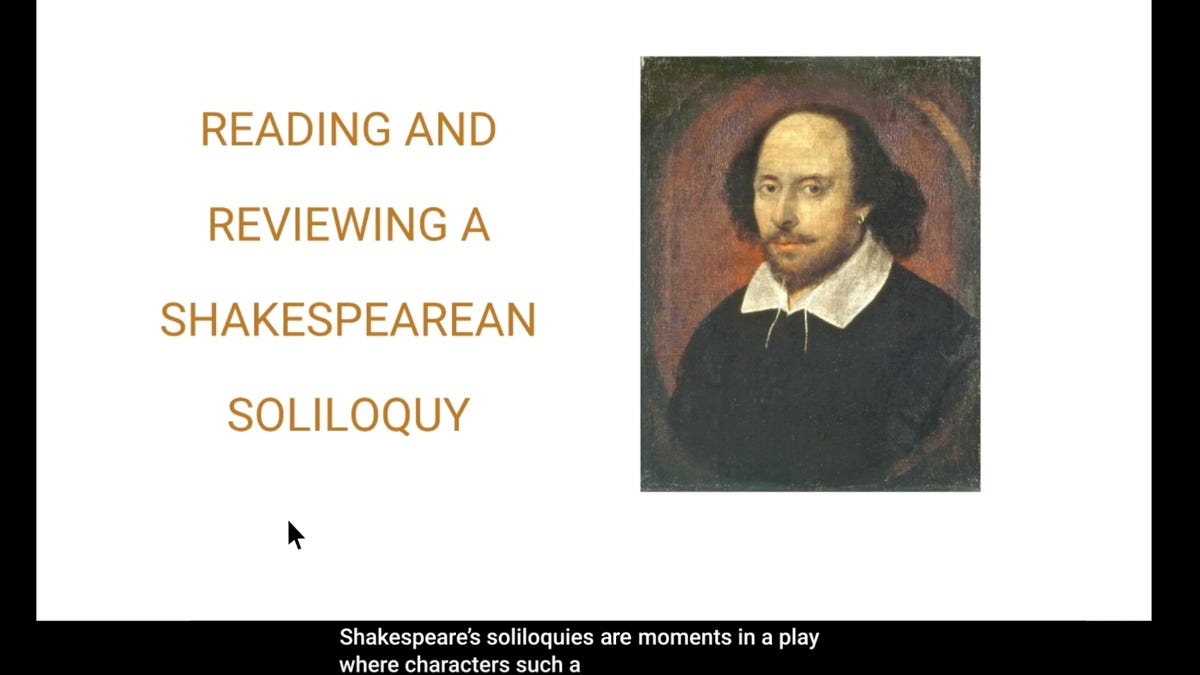Google Slides can now automatically transcribe your speech into captions
The new accessibility feature is designed to assist those who are hard of hearing.

Google Slides has a new closed-captions feature.
Google's G Suite is adding automated closed captions to Google Slides, the company said Monday.
The feature will roll out to users beginning this week. It works by accessing your computer's microphone to pick up on what you're saying during a presentation. It then transcribes your speech as captions, which appear on the slides you're presenting in real time.
Google said the closed-captions feature in Slides can be helpful not only for people who are hearing impaired, but also for audience members in a noisy room. It can also be beneficial when a presenter isn't speaking loudly enough, the company said.
To activate the feature, click the "CC" button in the navigation box when you start presenting. You can also use keyboard shortcuts, which are command + Shift + c on Mac and Ctrl + Shift + c in Chrome OS/Windows.
A demonstration of the new closed captions feature on Google Slides.
The feature works for a single user speaking in US English, and is only available on the Chrome browser on a laptop or desktop. Google says it wants to roll out the feature in more countries and languages in the future.
Laura D'Aquila and Abigail Klein, software engineers on the G Suite accessibility team, began working on the feature as part of an internal hackathon. D'Aquila, who has hearing loss, and Klein found it can be tough for people who are deaf or hard of hearing to follow along with presentations. Some of their other projects on G Suite's accessibility team include improving support for screen magnifier, Braille and screen reader on Google Docs, Sheets and Slides.
Google has developed other tools over the years designed to help people with disabilities. Last week, it launched its Voice Access app, which lets users navigate Android phones hands-free. In May, it said it was developing an Android app called Lookout, which would help the visually impaired by giving spoken clues about the objects, text and people around them. And in March, Google added wheelchair accessible navigation to its Maps app to help users find a route that accommodates wheelchairs.

